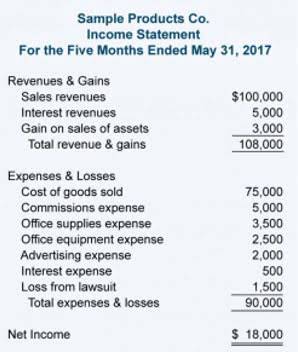
However, if you unnecessarily write off payments, that you can recover through effective A/R management, you will strain your practice’s revenue cycle. A healthcare provider has exhausted all efforts to collect payment from a patient who owes $500. After multiple attempts and communication, it becomes evident that the account is uncollectible. The provider decides to write off the $500 as bad debt, reducing the accounts receivable balance accordingly. We offer AR management as a https://vinamar.vsptdigital.cl/2024/04/03/quickbooks-payroll-review-2023-pros-cons/ standalone service or as part of our full-service medical billing and revenue cycle management solutions.
Best practices to improve Days in Accounts Receivable (A/R)
Thus, your billing accounts receivable in healthcare office must follow a streamlined process for A/R recovery. Simply billing patients and payers and expecting them to pay is not enough. Without stringent procedures for payment collection, reducing write-offs is a lost cause. Unnecessary write-offs will be reported as financial losses for the facility, leading to bad debts.

What is Accounts Receivable (AR) in Medical Billing?

In this guide, we’ll take you through everything you need to know to make the most of this essential resource. Increased Operational EfficiencyEfficient billing methods lessen administrative burdens, permitting personnel to focus on patient care in place of chasing payments. Practicing minimum A/R days for all your payers should be your goal to achieve high performance. Getting compensation for your services is essential to maintain the supply of medical equipment and other services.
- Integrating your billing system with your electronic health record (EHR) allows you to submit claims electronically and reduce data entry errors.
- You should send automated payment reminders via email or SMS before and after appointments to ensure patients are aware of their responsibilities.
- These delays can majorly impact operating efficiency and necessitate specialized personnel for resolution and monitoring.
- Analytical tools driven by AI can also predict cash flow and spot payer trends that impede payment.
- Accounts receivable in healthcare are the outstanding payment for the rendered care services owed to the healthcare practitioner by the patient or the insurance company.
- There are three stages of AR management that healthcare providers should be aware of.
Key Components of Accounts Receivable
Not only does noncompliance lead to fines, sanctions, and accreditation issues, it also does lasting damage to an organization’s reputation and brand. Automating accounts receivable processes is the surest way to avoid compliance errors involving data privacy, invoicing practices, accounting fraud, and other key areas of concern. Patients need to know that their healthcare provider can be trusted not only with their health, but also their payments and privacy. A strong business is built on an excellent customer experience—one that’s as transparent and supportive as possible. A healthy AR process can make it easier to circumvent and ameliorate issues like insurance claim denials, freeing up time to focus on stronger relationships and better patient care.. Accounts Receivable, often abbreviated as AR, refers to the money owed to a business by its clients or customers who have received goods or services but have yet to pay for them.
Related: The RCM Guide to Timely Claims Submission: Avoid Costly Rejections and Revenue Loss

A high AR balance often signals delays or issues in the billing process, while a lower AR indicates effective billing practices and timely reimbursements. You can collect more money faster by collecting patient payments upfront, offering financing options, and providing patient estimates. You should also monitor your AR regularly and automate your AR process to ensure timely payments. Outsourcing your AR management helps you focus on what’s important – providing quality patient care.
- To avoid payments spending too many days in accounts receivable, healthcare organizations need to keep an eye on these common issues.
- So, if you are experiencing a decline in collections despite following an orderly AR plan, then you should check your front desk staff for possible improvements.
- This way, healthcare providers can stay focused on their core competencies and effectively and smoothly overcome multiple challenges.
- They can ensure timely claim submission, manage follow-ups, handle claim denials, and provide regular AR reports for the practice.
- If your claim is denied, give it the top priority status and determine the reason for denial.
What is AR in Medical Billing? Guide for Accounts Receivable

AR stands for Accounts Receivable, representing the money owed to a healthcare provider for services rendered but not yet paid. At TruBridge we’ve been helping rural and community healthcare providers across the country achieve their AR goals. Our proven AR Recovery Services include AR Recovery Workdown, which can help you reach your collections objectives without burning out your staff. Maximize your revenue and achieve financial stability, trusted by healthcare providers for over 45 years. Automating your billing process can help you collect payments more quickly and reduce errors.

To bill Medicaid for ABA services, providers must ensure credentialing is complete, services are pre-authorized, and claims use the correct codes and modifiers. Medicaid requirements vary by state, so always follow state-specific billing rules. ABA therapy billing is https://www.bookstime.com/articles/bookkeeping-tips the process of submitting claims to insurance or Medicaid for Applied Behavior Analysis services provided to individuals with autism or developmental disorders. It includes using correct CPT codes, proper documentation, and adherence to payer-specific policies. Providing regular training to staff on the latest coding guidelines, regulations, and best practices helps improve the accuracy of the AR management process.
- This is another situation where manual processes and out-of-date systems can cause significant problems.
- Accounts receivable in medical billing involves the management of outstanding payments and invoices from patients and customers.
- The best practice is to verify patient insurance details, including coverage limits, copays, deductibles, and policy expiration dates before they book an appointment.
- It will turn out that HCFA, (Health Care Financing Administration) is an alternate name for the U.S.-based government agency that manages the Medicare and Medicaid programs.
- Accurate Patient RegistrationPatient registration needs complete and accurate information right after registration to prevent billing mistakes that result in denied claims.
Providing patients with cost estimates before a treatment or procedure is important for patient financial planning. If patients know how much the procedure will cost, they are more likely to pay. Complete the form, and our expert team will reach out to understand your unique needs and provide tailored solutions to drive your practice’s success.Let’s discuss together. Outsourced AR teams flexibly adapt to your business’s changing needs, effortlessly handling seasonal spikes or rapid growth without requiring additional internal hiring.
